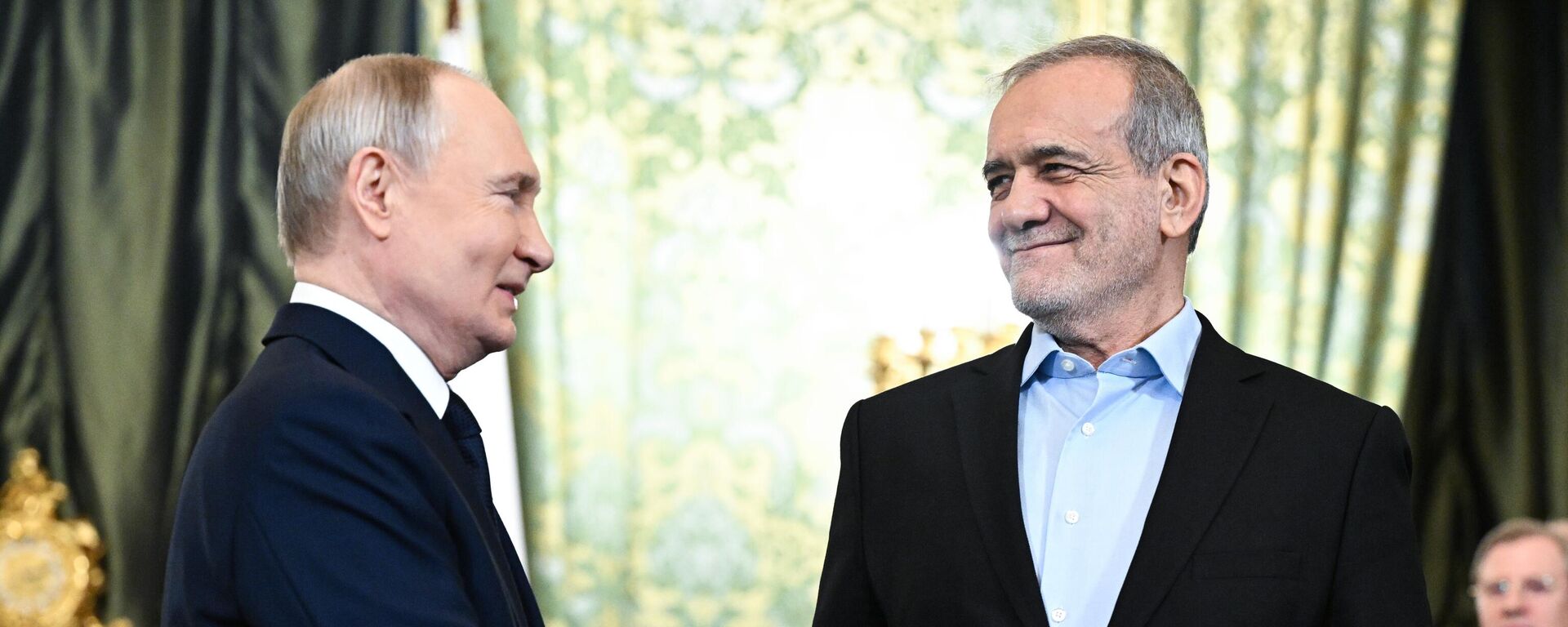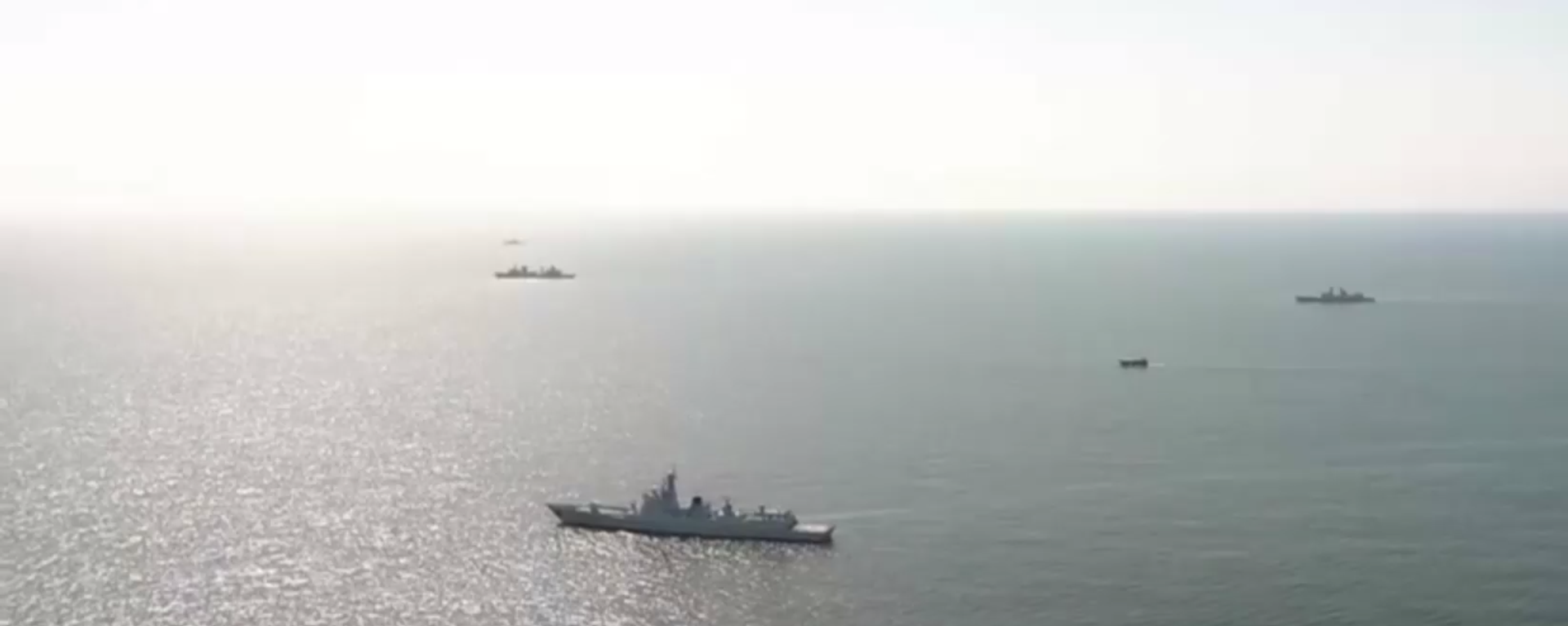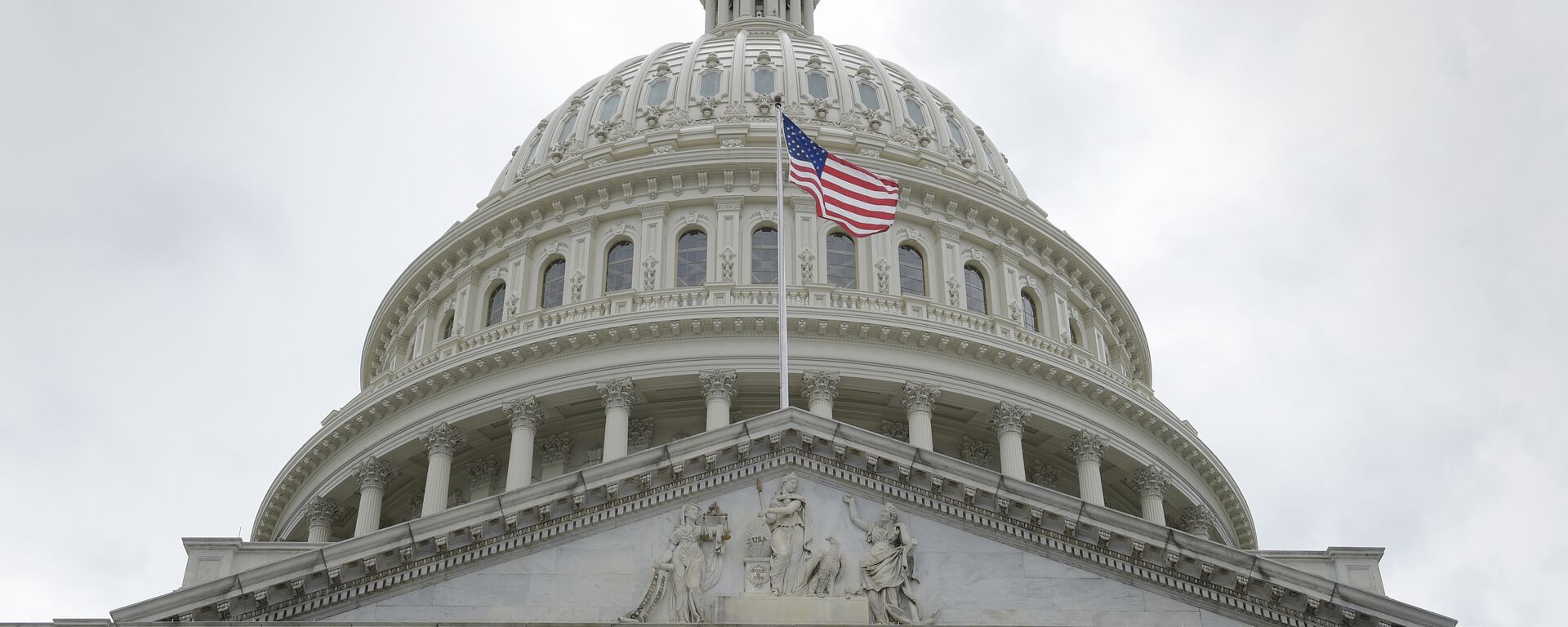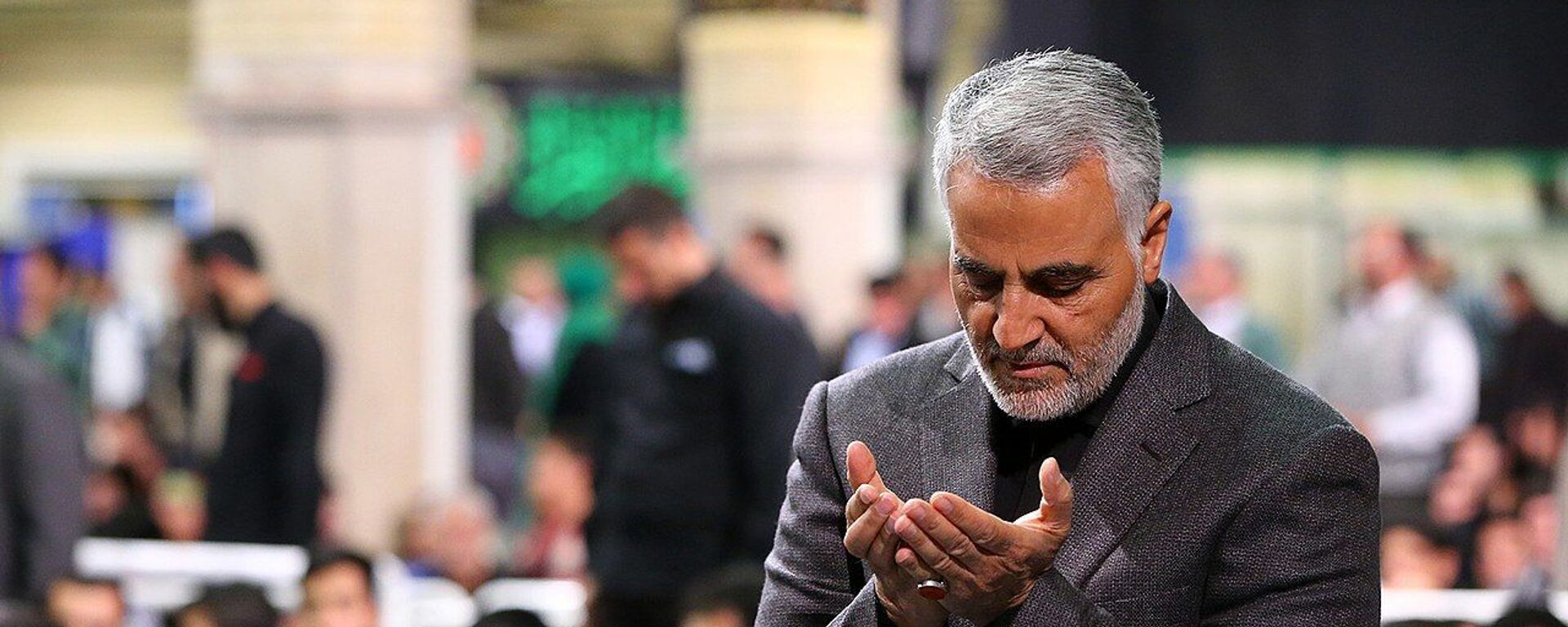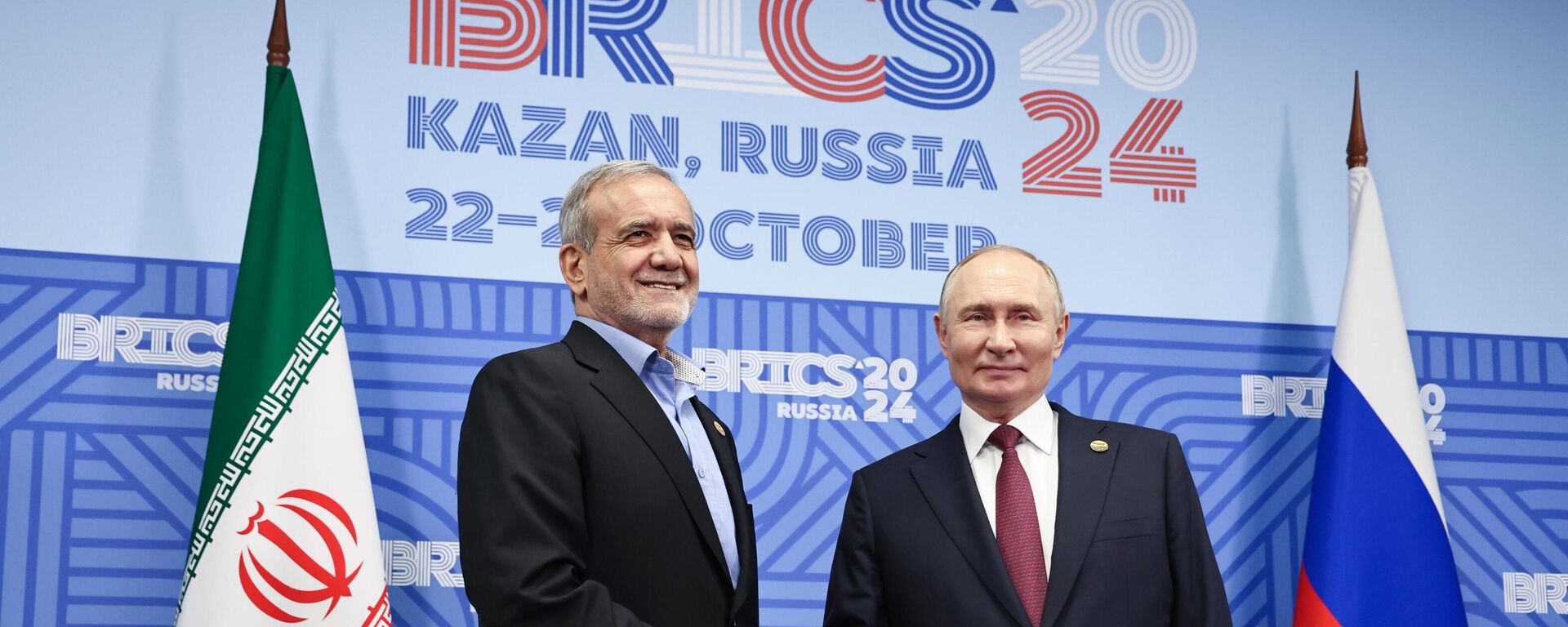https://sputnikglobe.com/20250117/inside-the-russia-iran-comprehensive-partnership-treaty-whats-in-it-and-why-it-matters-1121451067.html
Inside the Russia-Iran Comprehensive Partnership Treaty: What’s In It and Why It Matters
Inside the Russia-Iran Comprehensive Partnership Treaty: What’s In It and Why It Matters
Sputnik International
Three years of negotiations on a new strategic partnership pact between Russia and Iran reached a fruitful conclusion Friday in a signing ceremony in the Kremlin attended by top officials, including Presidents Putin and Pezeshkian. What's inside the agreement, and what will it mean for regional and international security? Here's what to know.
2025-01-17T19:04+0000
2025-01-17T19:04+0000
2025-01-17T19:19+0000
analysis
mohammad marandi
viktor litovkin
masoud pezeshkian
iran
russia
west
nato
un charter
eurasian economic union
https://cdn1.img.sputnikglobe.com/img/07e9/01/11/1121452120_0:134:3163:1913_1920x0_80_0_0_770f221b246fca22234dae0c796b09d8.jpg
The 47-article Comprehensive Strategic Partnership treaty signed January 17 includes a heavy focus on security, with the parties broadly agreeing to “strive to deepen and expand relations in all areas of mutual interest, strengthen cooperation in security and defense, engage in close coordination of activities at the regional and global levels.”Rejecting UnipolarityThe treaty includes an overarching commitment to “mutual respect” for one another’s national and security interests, support for multilateralism in world affairs and “rejection of unipolarity and hegemony” - a clear nod to US policy and Washington's so-called 'rules-based international order'.Furthermore, the parties commit not to allow each other’s territory to be used to support separatists or engage in any other hostile actions against one another.The two countries' intelligence and security services have been given a green light to ramp up the exchange of information, experience and expertise, while their militaries have the right and opportunity to increase joint drills, consult and cooperate in countering “common military and security threats of a bilateral and regional nature.”Protection for the Region Against Meddling by “Third States”Alongside cooperation against terrorism, crime, illegal immigration the proliferation of WMDs and array of other dangers, the new treaty includes a separate article on measures to assure peace and security in the Caspian, Central Asia, Caucasus and Middle East regions, and cooperation "to prevent interference in these regions and destabilizing presence there of third states.”Who these "third states" might be is not difficult to guess, given the long-standing Russian concerns about US and NATO encroachment in these and other regions of the world, and Tehran's long-standing proposals for a new Persian Gulf security arrangement without US involvement.The Economic Front: Cooperation on Sanctions, Science and SpaceThe treaty's economics-related side promotes the creation of new “direct connections” between Russia and Iran’s regions for enhanced economic and investment cooperation.The treaty makes mention of opportunities for the ramping up of cooperation across a broad array of other areas, including health, education, science, culture, media, publishing, tourism and sport, plus expanded “interaction, exchange of views and experience in the field of space research and exploration for peaceful purposes.”Pact Will Allow Russia and Iran to Survive, Thrive in Hostile WorldThe two nations have “huge potential” for cooperation, from the North-South Transport Corridor to conventional and nuclear energy, defense and more, Marandi said.The treaty was really made possible by the short-sighted US policy of antagonizing both countries - including over four decades of hostility to Iran, and the slapping of "equally barbaric and brutal" sanctions on Russia in recent years, according to the observer.The West's efforts to antagonize both countries simultaneously has proven a "grave mistake," Marandi said.The same applies when it comes to enhancing cooperation in the nuclear energy field, Marandi says.The immense “potential” unleashed by the treaty will make it “more difficult for the United States to try to undermine Russian power and to undermine Iranian capabilities,” Marandi added.In the defense sphere, enhanced cooperation is "key" because both countries "are being threatened by the West and both have enormous military capabilities," whether it be Iranian drones and missiles or Russian defense technologies being used by Iran, according to Marandi.Pointing to the recent successes enjoyed by the US and its European and regional allies in strengthening al-Qaeda* and ISIS* elements in Syria, and the risks of terrorism spreading to Central Asia and across Asia, Dr. Marandi said these events show that Russia and Iran need to expand security cooperation like never before to contain the spread of the terror threat.Not Outright Military Alliance, But the Next Best ThingThe Comprehensive Strategic Partnership treaty between Russia and Iran isn’t strictly an alliance committing them to fight on one another’s behalf in battle, but is basically the next best thing, retired Russian Army colonel Viktor Litovkin told Sputnik.As far as aggressors go, “we will not only not support them; we will not provide them with any assistance, including intelligence, or allow them to use our territory for raids. For example, we have our base in Armenia. We would not allow foreign planes to land there to attack Iran,” the Litovkin said.When it comes to potential for enhanced defense cooperation afforded by the new treaty, Russia could help plug gaps in Iran’s powerful air defenses, via the delivery of Sukhoi Su-30 jets, and/or Pantsir, Tor, Buk or S-400 systems, for example. Russia, for its part, could benefit from Iran’s vast domestically-developed arsenals of missiles and drones, Litovkin said.* A terrorist group outlawed in Russia and many other countries.
https://sputnikglobe.com/20250117/putin-strategic-agreement-with-iran-marks-a-new-era-of-cooperation-1121446254.html
https://sputnikglobe.com/20240313/brics-powers-russia-iran-and-china-flex-military-muscle-in-massive-naval-drills-1117308975.html
https://sputnikglobe.com/20241114/president-pezeshkian-iran-has-never-and-will-never-seek-nuclear-weapons-1120888406.html
https://sputnikglobe.com/20250109/pepe-escobar-empire-of-chaos-reloaded-1121393521.html
https://sputnikglobe.com/20250102/qasem-soleimani-holy-warrior-against-us-imperialism-zionism-and-takfiri-terrorism-1121334897.html
https://sputnikglobe.com/20250117/iran-russia-partnership-game-changer-for-security-trade-and-education-1121441643.html
iran
russia
west
Sputnik International
feedback@sputniknews.com
+74956456601
MIA „Rossiya Segodnya“
2025
News
en_EN
Sputnik International
feedback@sputniknews.com
+74956456601
MIA „Rossiya Segodnya“
Sputnik International
feedback@sputniknews.com
+74956456601
MIA „Rossiya Segodnya“
what's in russia-iran treaty, are russia and iran allies, will russia defend iran against us
what's in russia-iran treaty, are russia and iran allies, will russia defend iran against us
Inside the Russia-Iran Comprehensive Partnership Treaty: What’s In It and Why It Matters
19:04 GMT 17.01.2025 (Updated: 19:19 GMT 17.01.2025) Three years of negotiations on a new strategic partnership pact between Russia and Iran reached a fruitful conclusion Friday with a signing ceremony in the Kremlin attended by top officials, including Presidents Putin and Pezeshkian. What's inside the agreement, and what will it mean for regional and international security? Here's what to know.
The 47-article Comprehensive Strategic Partnership
treaty signed January 17 includes a heavy focus on security, with the parties broadly agreeing to “strive to deepen and expand relations in all areas of mutual interest, strengthen cooperation in security and defense, engage in close coordination of activities at the regional and global levels.”
The treaty includes an overarching commitment to “mutual respect” for one another’s national and security interests, support for multilateralism in world affairs and “rejection of unipolarity and hegemony” - a clear nod to US policy and Washington's so-called
'rules-based international order'.
“If one [party] is subject to aggression, the other shall not provide any military or other assistance to the aggressor that contributes to the continuation of aggression,” and strive to resolve the conflict through diplomacy on the basis of the UN Charter, the agreement says.
Furthermore, the parties commit not to allow each other’s territory to be used to support separatists or engage in any other hostile actions against one another.
The two countries' intelligence and security services have been given a green light to ramp up the exchange of information, experience and expertise, while their militaries have the right and opportunity to increase joint drills, consult and cooperate in countering “common military and security threats of a bilateral and regional nature.”
Protection for the Region Against Meddling by “Third States”
Alongside cooperation against terrorism, crime, illegal immigration the proliferation of WMDs and array of other dangers, the new treaty includes a separate article on measures to assure peace and security in the Caspian, Central Asia, Caucasus and Middle East regions, and cooperation "to prevent interference in these regions and destabilizing presence there of third states.”
Who these "third states" might be is not difficult to guess, given the long-standing Russian concerns about US and NATO encroachment in these and other regions of the world, and Tehran's long-standing proposals for a new Persian Gulf security arrangement
without US involvement.Article 14 of the agreement highlights the need for strengthened security, political, economic, cultural and humanitarian cooperation via the Shanghai Cooperation Organization, and expanded ties between Iran and the Eurasian Economic Union.
The Economic Front: Cooperation on Sanctions, Science and Space
The treaty's economics-related side promotes the creation of new “direct connections” between Russia and Iran’s regions for enhanced economic and investment cooperation.
Significantly, the parties commit to reject “the use of unilateral coercive measures,” (i.e. sanctions), and to take “practical efforts to reduce risks, eliminate or minimize the direct and indirect impact of such measures on mutual economic relations.”
The treaty calls for the creation of “modern payment infrastructure independent of third countries, transition to bilateral settlements in national currencies, the strengthening of direct inter-bank cooperation and distribution of national financial products,” and the creation of a simplified customs regime.
Special attention is paid to gold and diamond mining and processing, work on the ambitious North-South Transport Corridor, and cooperation in the oil and gas sector, including scientific and technical engagement and experience exchange, resource supply and swaps, investment, and cooperation via OPEC+ and other international forums.
Article 23 calls for the promotion of development of “long-term and mutually beneficial relations” in the peaceful use of nuclear energy, including the construction of new nuclear energy facilities.
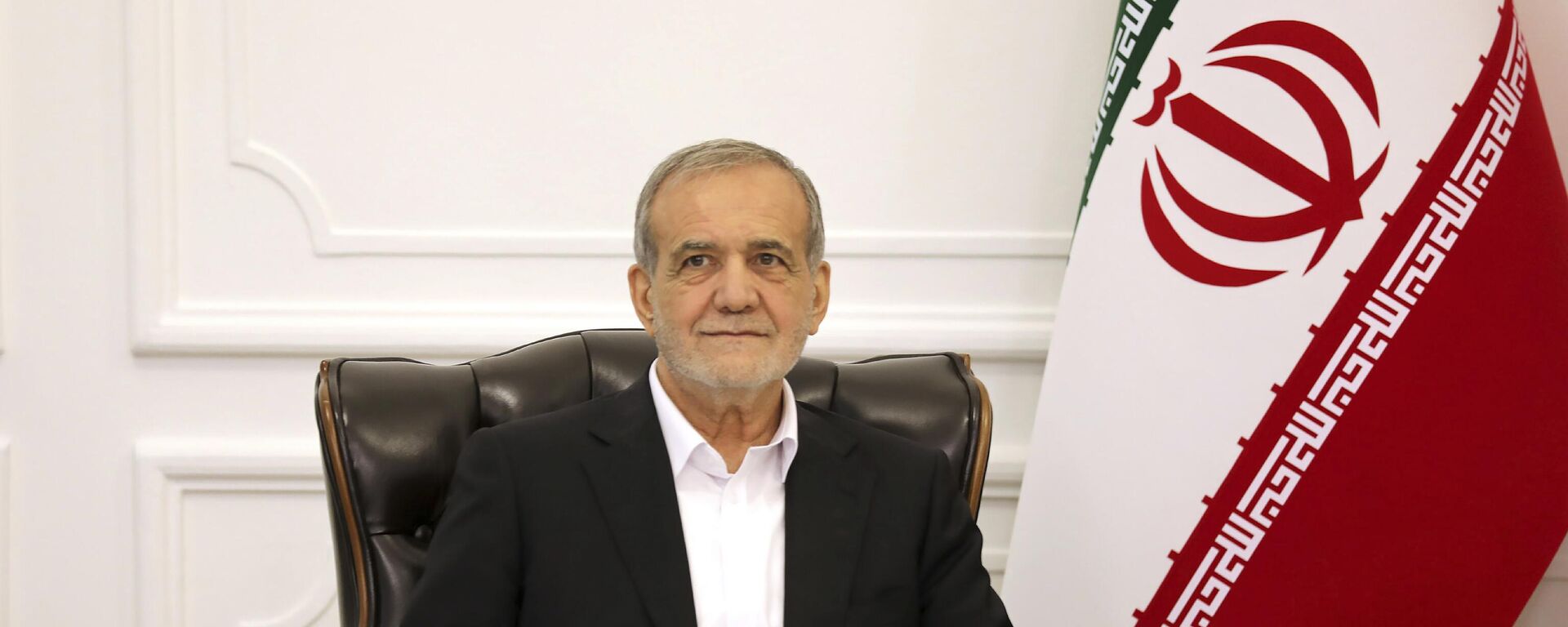
14 November 2024, 16:24 GMT
The treaty makes mention of opportunities for the ramping up of cooperation across a broad array of other areas, including health, education, science, culture, media, publishing, tourism and sport, plus expanded “interaction, exchange of views and experience in the field of space research and exploration for peaceful purposes.”
Interestingly, the treaty’s dispute resolution mechanism, which is based on consultations and diplomatic negotiations, includes reference to an English-language version of the text of the agreement (which is also available in Russian and Persian) in case of any disagreements about its interpretation.
Pact Will Allow Russia and Iran to Survive, Thrive in Hostile World
“It is a very important agreement, especially as the world is changing so rapidly and the West is behaving in such a hostile manner towards the global majority and of course Iran and Russia in particular,” renowned Iranian-American international affairs observer Dr. Mohammad Marandi told Sputnik.
The two nations have “huge potential” for cooperation, from the North-South Transport Corridor to conventional and nuclear energy, defense and more, Marandi said.
The treaty was really made possible by the short-sighted US policy of antagonizing both countries - including over four decades of hostility to Iran, and the slapping of "equally barbaric and brutal" sanctions on Russia in recent years, according to the observer.
The West's efforts to antagonize both countries simultaneously has proven a "grave mistake," Marandi said.
"We have the potential for Russia to do trade through the Persian Gulf with the Indian subcontinent, Indonesia, Africa, Southeast Asia in general. But also Russia has the potential to export its natural gas to Pakistan, to Iraq and other countries in the Arabian Peninsula through Iran, so the types of cooperation that can be expanded are enormous. The two countries haven't explored enough of their potential in the past, and they're just finally beginning to move to exploit that potential," Dr. Marandi believes.
The same applies when it comes to enhancing cooperation in the nuclear energy field, Marandi says.
“Iran has been developing its peaceful nuclear program and it is now one of the most developed countries in the world” in this area. “Because of Russia's very long experience with nuclear energy, Iran is very keen on furthering that cooperation. It has enormous financial benefits for Russia to build these power plants. And for Iran, it's a means for the country to decrease its reliance on fossil fuels so that it could export more fossil fuel,” the observer noted.
The immense “potential” unleashed by the treaty will make it “more difficult for the United States to try to undermine Russian power and to undermine Iranian capabilities,” Marandi added.
In the defense sphere, enhanced cooperation is "key" because both countries "are being threatened by the West and both have enormous military capabilities," whether it be Iranian drones and missiles or Russian defense technologies being used by Iran, according to Marandi.
"Both countries feel that the expansion of NATO and regimes affiliated with the West are potentially dangerous for the world and definitely dangerous for Iran and Russia. So the two countries have a shared interest to keep NATO out of the Caspian Sea, but also both are deeply concerned about terrorism," the scholar emphasized.
Pointing to the recent successes enjoyed by the US and its European and regional allies in strengthening al-Qaeda* and ISIS* elements in Syria, and the risks of terrorism spreading to Central Asia and across Asia, Dr. Marandi said these events show that Russia and Iran need to expand security cooperation like never before to contain the spread of the terror threat.
Not Outright Military Alliance, But the Next Best Thing
The Comprehensive Strategic Partnership treaty between Russia and Iran isn’t strictly an alliance committing them to fight on one another’s behalf in battle, but is basically the next best thing, retired Russian Army colonel Viktor Litovkin told Sputnik.
The treaty commits Russia “to provide Iran with assistance. What kinds of assistance? At the United Nations and in other international forums, we will defend Iran’s interests. We’ll supply Iran with the military equipment and weapons it needs to defend itself,” the military analyst explained.
As far as aggressors go, “we will not only not support them; we will not provide them with any assistance, including intelligence, or allow them to use our territory for raids. For example, we have our base in Armenia. We would not allow foreign planes to land there to attack Iran,” the Litovkin said.
When it comes to potential for enhanced defense cooperation afforded by the new treaty, Russia could help plug gaps in Iran’s powerful air defenses, via the delivery of Sukhoi Su-30 jets, and/or Pantsir, Tor, Buk or S-400 systems, for example. Russia, for its part, could benefit from Iran’s vast domestically-developed arsenals of missiles and drones, Litovkin said.
* A terrorist group outlawed in Russia and many other countries.


